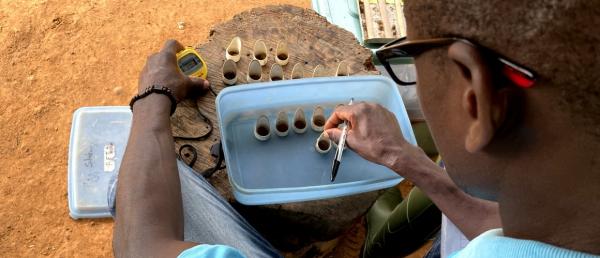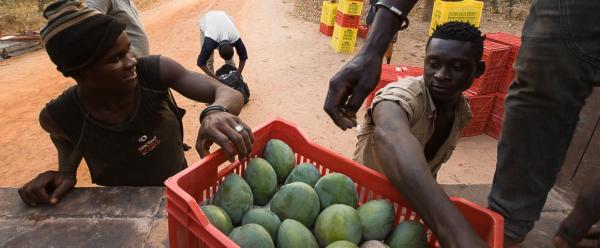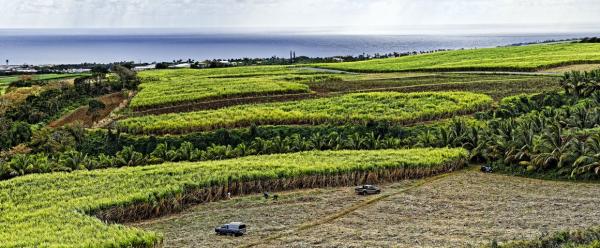Results & impact 5 February 2024
- Home
- CIRAD news
- News
- Group farming for sustainable production
Is group farming the way to sustainable production?
.JPG)
The global debate on food security and farming system sustainability has confronted and caricatured two systems: small family farms that produce a lot but pay little, versus large mechanized, industrial farms that take advantage of scale economies but with adverse impacts on jobs and natural resources. What if the solution lay in striking a happy medium? In a type of group farming in which land, labour and capital were pooled? This is the idea Bina Agarwal and Bruno Dorin, economists at the University of Manchester and CIRAD, decided to look into. hey studied a French model, the GAEC, the only legally recognized form of group farming in the world ,galvanized by a law dating back to 1962. Their results have been published in the journal Environment and Planning A: Economy and Space .
The distinction between group farming and cooperatives
Group farming is a form of day-to-day agricultural production based on cooperation between several partners. By sharing land, labour, capital and farm management responsibilities, farmers boost their capacity to invest, innovate, negotiate, or free family members from agricultural work. It is different from cooperative organizations, which federate farmers ahead of or following production operations. While cooperatives have been studied extensively, this is far from true for group farming, which is largely overlooked on a global level. For Bruno Dorin, "this lack of academic and political attention is probably the results of the disastrous experiments with enforced collectivism in ex-USSR and China".
Is group farming a relevant model for the global South?
The authors of the article set out to pinpoint the circumstances that favoured this type of collegiate farming in France. The idea behind the study was to shed light on the conditions for the emergence of group agriculture in countries such as India, where micro-farming is the dominant model . In 2011, there were 138 million farms in India, with an average area of barely 1.2 hectare. This dispersal of means of production raises several issues: these micro-farms generate little income, and spouses and children find it difficult to free themselves from agricultural work and commit fully to other work or to higher education. Small farms also have next to no bargaining power or investment capacity, and are highly vulnerable to climate and economic risks. Unfortunately, the number of micro-farms is continuing to grow, both in India* and in many other countries in the global South**.
The conditions that favoured the installation of GAECs
In France, in 2010, GAECs accounted for 7.6% of farms and 15% of agricultural jobs (full-time equivalents), although numbers vary substantially from one département to another. What are the economic, ecological, social or demographic factors behind these variations? After reviewing the available literature, conducted field surveys and compiling and checking vast amounts of data, Bruno Dorin and Bina Agarwal were able to pinpoint the underlying criteria. The départements with the most GAECs are also those:
- that were dominated by medium-sized farms in 1970 (20-49 ha)
- where the local ecology (relief, pastures, etc) favours labour-intensive animal production rather than large-scale mechanized mono-cropping;
- with a higher proportion of agricultural graduates;
- with greater economic equality (measured by their Gini coefficient);
- where social institutions (catholic in this case) promote, or previously promoted, community cohesion.
Prospects
These results highlight not just the conditions that favoured the emergence of group farming in France, but also those that would foster the adoption of this French model in other countries, once adapted to the local context. Bina Agarwal was awarded the 2017 Balzan prize and Malassis prize . In 2005, she played a key role in the revision, in favour of women, of the Hindu Succession Act, particularly as regards transfers of agricultural land. There is every reason to assume that group farming could be equally successful… in India and elsewhere.
How a Franco-Indian research project was born
The idea of looking into the "orphan" topic of group farming dates back to the Planet Under Pressureconference in London in 2012. Bina Agarwal, who was President of the International Association of Ecological Economics ( IAEE ), quizzed CIRAD's Bruno Dorin about GAECs: "do they still exist, since the North American dissertation thesis on them in 1977***? What characterizes them and how do they work? Can we learn lessons from them for countries like India?" Bruno Dorin had never worked on group farming, but was familiar with the concept, since his father founded one of the first GAECs in France in the early 1960s, with five other farmers. This was how the two of them started to work on this type of collegiate farming, which had previously largely been overlooked.
*** Murphy J.L., 1977. “The third way: Group farming in France”. Doctoral dissertation, University of California, Santa Barbara, CA


























